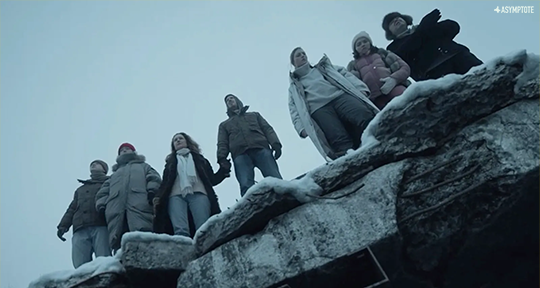The apocalyptic story of a (fictional) post-epidemic Russia in Yana Vagner’s To the Lake had found an enormous international audience by way of a 2020 adaptation, directed by Pavel Kostomarov and Dmitriy Tyurin and released on Netflix. This positive reception of what audiences called an exceptionally prescient tale perhaps encouraged another English edition of the award-winning text, which is now out by way of Deep Vellum. In this following essay, Heloisa Selles discusses To the Lake in view of its on-screen reproduction.
When I first saw the publication announcement for To the Lake from Deep Vellum, I almost missed it. It was mid-July, and social media feeds were rife with pictures of a New York city ablaze with smoke from Canadian wildfires—scrolls of tiny red suns paired with tips on how to cope with poor air quality. Through the apocalyptic scenes, the outline of a hazy pine forest on a white, inconspicuous cover caught my eye, and within a few minutes I discovered that the book was, in fact, the book—that gave origin to the lauded Netflix series of the same name.
When To the Lake (Эпидемия in Russian, or “Epidemic”) came to screens in October 2020, we were all stuck at home, journeying around our rooms, trying to find ways to cope with the COVID-19 pandemic, and two months away from the first vaccines being administered. The show seemed to be an addition to an ever-growing collection of media that depicted viruses, contagious diseases, and varying levels of societal panic—as though watching chaos unfold before our eyes made the palpable reality a bit easier to endure. But this story, an action-packed drama directed by Pavel Kostomarov about a group of people struggling to survive an epidemic ravaging Moscow, had a distinct texture. READ MORE…

